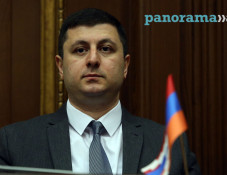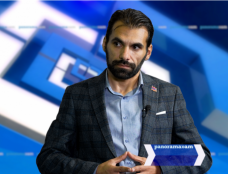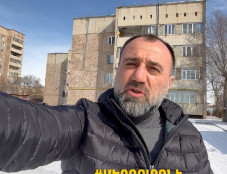
Analysis: Armenia scores technical knockout victory over Azerbaijan at Council of Europe
The events that took place on Wednesday at the Council of Europe (CoE) are reminiscent of a technical knockout (TKO), when a boxer is deemed by the referee (and sometimes the ringside physician) to be unable to defend himself properly after sustaining a serious injury. We can state that Azerbaijan faced to a technical knockout within the CoE and was dropped out of the fight for democracy, human rights and the rule of law in the country.
In January 2001, Armenia and Azerbaijan joined this prestigious European institution, with the Council of Europe, Namely the Parliamentary Assembly of the Council of Europe becameing another platform for Armenian-Azerbaijani competition. What developments did those 17 years saw?
In his speech addressed to the PACE January session on Tuesday, President Sargsyan summed up Armenia’s path announcing that “Armenia has fulfilled the main commitments of democratization assumed before the CoE”. At the meetings with the Armenian President, the CoE leadership lavishly praised Armenia pointing out the progress achieved by the country.
Azerbaijan at the same time was again slammed by its European partners for jailing the Azeri reporter kidnapped from the neighbouring state (referring to Afgan Mukhtarli). In parallel to this, the CoE Committee of Ministers is seriously considering the possibility of terminating Azerbaijan’s membership to the structure amid the county’s failure to implement the ECHR judgement and registered decline in democracy.
This does not mean that Armenia’s democracy is in a perfect state, and there is nothing left to do. On the contrary, we still have to overcome a long path to establish mature democratic institutions and ensure their efficient functioning. The matter is the dynamics, the pace of progress and the development vison.
Azerbaijan is perceived as a an authoritarian, clan-ruled country, which poses a risk to the entire CoE legal system with its aggressive and bellicose policies, continuous violations of human rights, as well as its dirty lobbying activities. The President of Armenia also touched upon this issue during his speech delivered at the PACE session. Reflecting on the Nagorno-Karabakh conflict, the President made it clear to the audience the incompatibility of the Artsakh people struggling for their rights and tyrannical Azerbaijan.
President Sargsyan also touched upon the important role of the Council of Europe, voicing Armenia’s support for the idea of convening a 4th Summit of Heads of State and Government of the Council of Europe. Such a statement is vital for the institution’s efficient activities on the backdrop of the crisis inside the CoE.
The next important fact highlighted by President Sargsyan at the PACE was that Armenia proved her ability to combine engagement in different integration structures and even to serve as a role model of cooperation. The question over the prospects of the Armenia-Turkey Protocols also received a clear answer.
And given all this, the Azerbaijani delegation had nothing else to do but to take a propaganda trick. But it was also of no use. The final blow Azerbaijan received before the technical knockout was perhaps when it faced President Sargsyan's sharp reversal in response to the question addressed by the head of the country’s delegation to the PACE regarding two of the most popular theses of the Azerbaijani propaganda – the Khojaly events and Armenia’s failure to comply with the resolutions adopted by the UNSC in 1993.
So, let's hope that Azerbaijan will no longer be able to hamper Armenia's democratization process, and countries with more solid basis in democracy will serve as role models for us.
Newsfeed
Videos






























